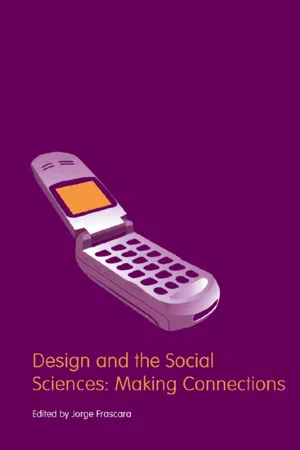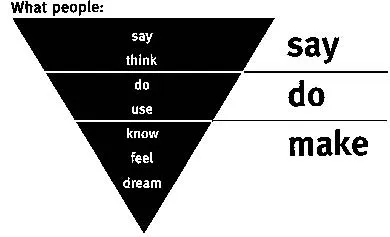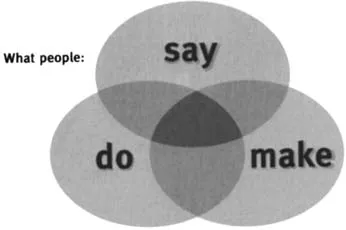
This is a test
- 256 pages
- English
- ePUB (mobile friendly)
- Available on iOS & Android
eBook - ePub
Book details
Book preview
Table of contents
Citations
About This Book
The social sciences have a distinctive contribution to make to the understanding and handling of design issues, both in product and systems design and in the design of the built environment. The role of cognitive psychology, particularly ergonomics, to the design process has traditionally been well appreciated. Because it provides important insight
Frequently asked questions
At the moment all of our mobile-responsive ePub books are available to download via the app. Most of our PDFs are also available to download and we're working on making the final remaining ones downloadable now. Learn more here.
Both plans give you full access to the library and all of Perlego’s features. The only differences are the price and subscription period: With the annual plan you’ll save around 30% compared to 12 months on the monthly plan.
We are an online textbook subscription service, where you can get access to an entire online library for less than the price of a single book per month. With over 1 million books across 1000+ topics, we’ve got you covered! Learn more here.
Look out for the read-aloud symbol on your next book to see if you can listen to it. The read-aloud tool reads text aloud for you, highlighting the text as it is being read. You can pause it, speed it up and slow it down. Learn more here.
Yes, you can access Design and the Social Sciences by Jorge Frascara in PDF and/or ePUB format, as well as other popular books in Technology & Engineering & Industrial Engineering. We have over one million books available in our catalogue for you to explore.
Information
1
From user-centered to participatory design approaches
Elizabeth B.-N.Sanders
Background
The integration of design with the applied social sciences is relatively new. Design firms began experimenting with the social sciences in the early 1980s. The experiment was design-driven, with social scientists being brought in to serve the design process.
As a social scientist trained both in psychology and anthropology, I was one of these “experiments.” I began to serve the design process in 1982. In the 1980s I played the role of the human factors practitioner, or “user advocate.” My role was to know the user and to translate that knowing into principles and prescriptions that the designers with whom I worked could understand and use. We called this the user-centered design process. As I learned ways to help make products and information systems more usable, I also studied the designers, especially the ways they visually communicated with each other.
User-centered design process
In the user-centered design process, we are focused on the thing being designed (e.g. the object, communication, space, interface, service, etc.), looking for ways to ensure that it meets the needs of the user.
The social scientist/researcher serves as the interface between the user and the designer. The researcher collects primary data or uses secondary sources to learn about the needs of the user. The researcher interprets this information, often in the form of design criteria. The designer interprets these criteria, typically through concept sketches or scenarios. The focus continues then on the design development of the thing. The researcher and user may or may not come back into the process for usability testing.
In user-centered design, the roles of the researcher and the designer are distinct, yet interdependent. The user is not really a part of the team, but is spoken for by the researcher.
Participatory culture
But I can see now, at the end of 1999, that there is a common ground, a new territory being formed by the reciprocal respect between designers and the social scientists. It is clear that social science still has much to offer design, just as design has much to offer the social sciences.
In participatory experiences, the roles of the designer and the researcher blur and the user becomes a critical component of the process. The new rules call for new tools. People want to express themselves and to participate directly and proactively in the design development process.
Today it is not “business as usual” anymore. The rules have changed and continue to change. The new rules are the rules of networks, not hierarchies. People are cynical about the methods and goals of consumerism. The users of products, interfaces, systems, and spaces are realizing that through networking they have an enormous amount of collective influence. They are beginning to use their influence to get what they want, when they want it and how they want it.
Design for experiencing
Today we are beginning to hear about “Experience Design,” whose aim is to design users’ experiences of things, events and places. This influence on design can be attributed to a significant literature being written in the social sciences that has begun to acknowledge the role of emotions in human experience (see Jensen 1999, for example).
But we can never really “design experience.” Experiencing is a constructive activity. That is, a user’s experience (with communication, for example) is constructed of two equal parts: what the communicator provides, and what the communication brings to the interaction. Where the two parts overlap is where the actual communication occurs. Knowing about users’ experiences, then, becomes vital to the process of designing the communication. If we have access to both what is being communicated and what experiences are influencing the reception of communication, then we can design for experiencing.
In fact, if we can learn to access people’s experiences (past, current and potential), then we can make user experience the source of inspiration and ideation for design. And by making user experience the source of inspiration, we are better able to design for experiencing.
How do we access experience?
There are many ways we can learn from people about their memories, their current experiences and their ideal experiences (Figure 1.1):
- We can listen to what people say
- We can interpret what people express, and make inferences about what they think
- We can watch what people do
- We can observe what people use
- We can uncover what people know
- We can reach toward understanding what people feel
- We can appreciate what people dream.

Figure 1.1 Ways we can learn.
Each route to experience reveals a different story or picture. Listening to what people say tells us what they are able to express in words (i.e. explicit knowledge). But it only gives us what they want us to hear. Watching what people do and seeing what they use provides us with observable information (or observed experience). But knowing what people say/think, do and use (Cain 1998) is not enough (Sanders 1992).
Discovering what people think and know provides us with their perceptions of experience. Understanding how people feel gives us the ability to empathize with them. This way of knowing provides tacit knowledge, i.e. knowledge that can’t readily be expressed in words (Polanyi 1983). Seeing and appreciating what people dream shows us how their future could change for the better. It is another form of tacit knowledge that can reveal latent needs, i.e. needs not recognizable until the future (Figure 1.2). For example, the Internet has been revealing many previously latent communication needs.

Figure 1.2 Levels.
The ability to not just know, but also to empathize with the user comes only at the deepest levels of their expression. Special tools are needed to access the deeper levels of user expression. By accessing people’s feelings, dreams and imaginations, we can establish resonance with them.
Accessing experience: what people do, say and make
The different ways of accessing experience have evolved over time. Traditional design research methods were focused primarily on observational research (i.e. looking at what people do and use). Traditional market research methods, on the other hand, have been focused more on what people say and think (through focus groups, interviews and questionnaires). The new tools are focused on what people make, i.e. what they create from the toolkits we provide for them to use in expressing their thoughts, feelings and dreams (Figure 1.3).

Figure 1.3 What people say, do, make/1.
When all three perspectives (what people do, what they say, and what they make) are explored simultaneously, one can more readily understand and establish empathy with the people who use products and information systems (Figure 1.4).

Figure 1.4 What people say, do, make/2.
The Make Tools
The Make Tools are the most recent development in design research. Because they are primarily visual, the Make Tools serve as a common ground for connecting the thoughts and ideas of people from different disciplines and perspectives.
The Make Tools are becoming a new language for co-design. They have been found to facilitate exchange between the people who experience products, interfaces, systems and spaces and the people who design for experiencing. The Make Tools are a “design language” for users, not just for designers; a design language built upon an aesthetics of experience rather than an aesthetics of form.
Because they are projective, the Make Tools are particularly good in the generative phase of the design development process. Generative research occurs very early in the design development process. Its purpose is to discover as-yet unknown, undefined and/or unanticipated user or consumer needs. Ideas and opportunities generated by users are usually quite relevant and powerful when acted upon and brought to market.
When Make Tools are used in the generative phase of the design development process, user-generated artifacts result. We have discovered that there are many different types of Make Toolkits that facilitate the expression of a wide range of artifacts and/or models. With “emotional toolkits,” people make artifacts such as collages or diaries that show or tell stories and dreams. We have found that these tools are extremely effective in accessing people’s unspoken feelings and emotional states. With “cognitive toolkits,” people make artifacts such as maps, mappings, 3-D models of functionality, diagrams of relationships, flowcharts of processes and cognitive models.
Every artifact tells a story and so we typically ask the creator of the artifact to tell us that story. The stories associated with the artifacts from the emotional toolkits tell of feelings, dreams, fears and aspirations. The stories associated with the artifacts from the cognitive toolkits tell us how people understand and misunderstand things, events and places. The cognitive toolkits can also reveal the intuitive relationships between system components.
By knowing how to access people’s feelings and ideas, we are able to establish resonance between a company and its customers. Resonating, or being in synch with one’s customers, means being able to quickly respond to their changing needs and aspirations. Resonance can be achieved by inviting users to play a role in the design development process.
Collective generativity
We have found that the new tools are effective in accessing end-users’ and other people’s unspoken feelings and ideas. The ideas they generate tend to be experience-based, not object-based. The tools are protective in nature, allowing users to project their own needs and desires onto their imagined experiences. Artifacts, interfaces, systems and space may or may not play a supporting role in these imaginings. The ideas generated are relevant. Relevance to users means simultaneously useful, usable and desirable.
The new tools can, in fact, harness the collective and infinitely expanding set of ideas and opportunities that emerge when the people who have a stake in the process are invited to “play the game.” Generative methods are a new language that enables all the stakeholders to contribute directly to the development of products, goods and services. This new language relies on visual literacy and begins to bring it into balance with verbal literacy.
Design is changing
How does the emergence of the new tools change the role of the designer? The roles of designer and design researcher are becoming mutually interdependent. The roles are converging to the point where they are blurring. Designers will participate in the creation of the tools and in the expansion of the design language for users. Designers will observe first-hand the experiences the tools afford for creative expression by the users and other stakeholders. Designers will be part of teams responsible for the analysis and interpretation of the “data”: the user-generated artifacts and models. Finally, designers can use the ideas generated by the users as sources of design inspiration and innovation.
Who creates the tools for the new design language? Designers and social scientists will need to work together. Social scientists bring frameworks for the understanding of user experience to the table, while designers know how to synthesize and embody ideas and opportunities.
How does the emergence of the new tools change the nature of design education? Designers need to be trained to go beyond the individualized expression of visual communication. They need to learn how to become involved in the creation and construction of the new tools.
Where does Postdesign fit? Postdesign is a new mindset. It transcends the traditional domain of design by making user experience (as opposed to artifacts, interfaces, systems or spaces) the focus for design inspiration and ideation. It is easy to see that people are ready for the Postdesign mindset. Just look at the Internet. New computer tools and applications have made self-expression through personal websites accessible to everyone with the time and desire to build one.
Postdesign is not about specific methods, tools or processes. It is about an emerging visual language that people, all people, can use to express and interpret those ideas and feelings that are often so difficult to express in words.
Postdesign is an attitude about people. It is about the recognition that all people have something to offer and that they, when given the means to express themselves, can be both articulate and creative.
Postdesign is contextual. Understanding and empathizing with the people who ...
Table of contents
- Cover Page
- Title Page
- Copyright Page
- Notes on contributors
- Preface
- Acknowledgements
- 1 From user-centered to participatory design approaches
- 2 Human factors for pleasure seekers
- 3 Communications artifacts
- 4 People-centered design
- 5 Social sciences and design innovation
- 6 Design language
- 7 Design moves
- 8 Emotion and urban experience
- 9 Wayfinding research and design
- 10 Preventing drug interactions in older adults
- 11 Fieldnotes from home
- 12 Research and design collaboration
- 13 The technical and the social in engineering education
- 14 Making connections
- 15 Appearance, form, and the retrieval of prior knowledge
- 16 The influence of affect on cognitive processes
- 17 Gendered spaces of domesticity
- 18 Social science as a design profession
- 19 Two weddings and still no funeral
- 20 Design and the social sciences
- 21 Conclusions